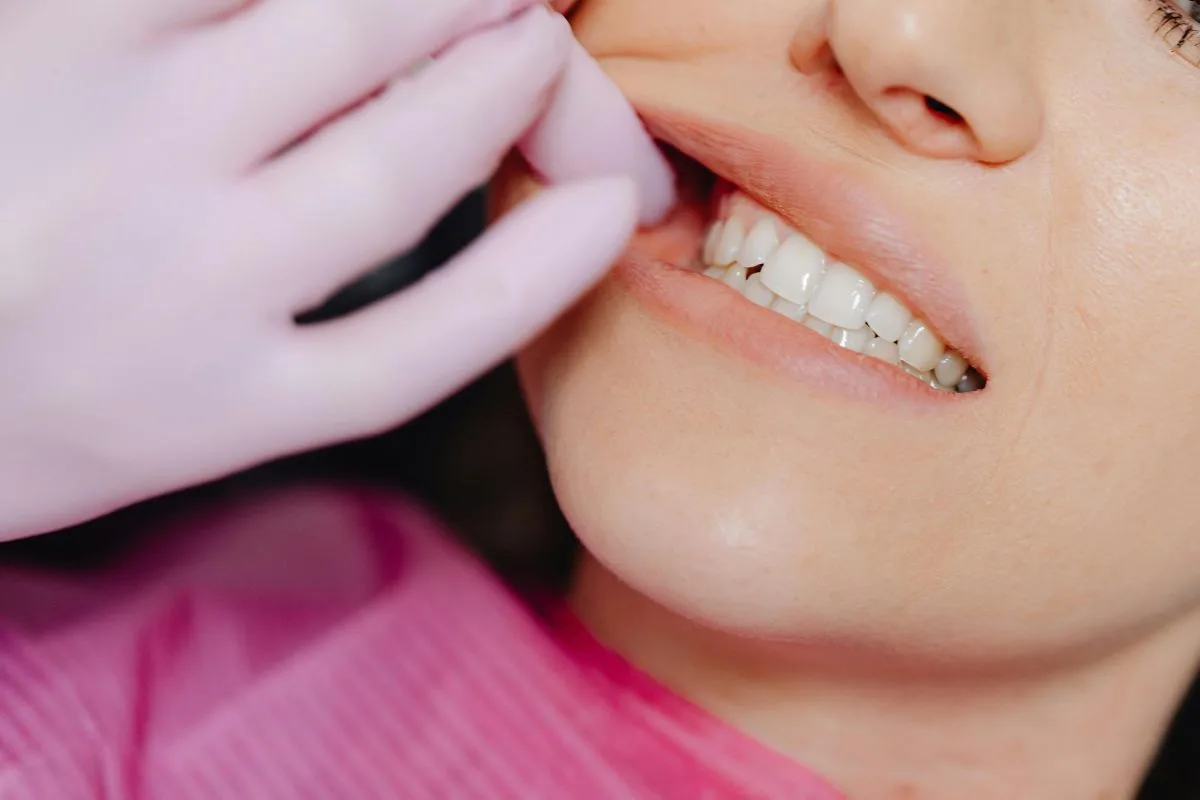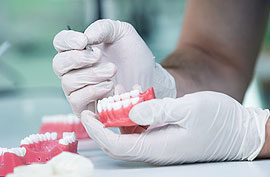We often associate tooth erosion with acidic drinks like sodas and fruit juices, or sugary foods that fuel cavity-causing bacteria. However, there’s another potent, often stealthy, source of acid that can wreak havoc on our enamel: our own stomach acid. Acid reflux, medically known as Gastroesophageal Reflux Disease (GERD), is a common condition where stomach acid frequently flows back up into the esophagus and, in many cases, reaches the mouth. This repeated exposure to highly corrosive gastric acid can lead to significant and irreversible erosion of tooth enamel, a condition known as dental erosion or acid erosion.
Unlike dental caries (cavities), which are caused by bacterial acids, erosion from acid reflux is a direct chemical dissolution of the tooth’s hard protective outer layer. Many individuals with GERD may not even be aware of the extent to which their teeth are being affected until noticeable symptoms like sensitivity or visible tooth wear appear. Understanding this crucial link between a common digestive issue and serious dental consequences is vital for both prevention and timely intervention to protect your long-term oral health.
What is Acid Reflux (GERD)? A Brief Overview
Gastroesophageal Reflux Disease (GERD) is a chronic digestive disorder that occurs when stomach acid, or occasionally stomach content, flows back (refluxes) into the esophagus (the tube connecting your mouth and stomach). This backwash irritates the lining of your esophagus.
Normally, a muscular ring at the bottom of the esophagus, called the lower esophageal sphincter (LES), acts like a one-way valve, opening to allow food into the stomach and closing to prevent stomach contents from flowing back up. In GERD, the LES may relax abnormally or weaken, allowing stomach acid to regurgitate. While occasional heartburn is common, GERD is diagnosed when acid reflux occurs frequently (e.g., more than twice a week) or causes significant symptoms or complications.
Common symptoms of GERD include:
- Heartburn (a burning sensation in the chest, often after eating)
- Regurgitation of food or sour liquid
- Difficulty swallowing (dysphagia)
- Sensation of a lump in the throat
- Chronic cough, laryngitis, or new/worsening asthma
However, a significant number of people experience “silent reflux” (Laryngopharyngeal Reflux or LPR), where stomach acid reaches the throat and mouth but doesn’t cause typical heartburn. In these cases, dental erosion might be one of the first signs a doctor or dentist notices.
The Destructive Power of Stomach Acid on Tooth Enamel
Stomach acid (gastric acid) is incredibly potent, primarily composed of hydrochloric acid, with a pH typically ranging from 1.5 to 3.5. This is far more acidic than most dietary acids. Tooth enamel, the hardest substance in the body, begins to demineralize (dissolve) when the pH in the mouth drops below approximately 5.5.
When stomach acid repeatedly bathes the teeth due to reflux:
- Direct Chemical Dissolution: The strong acid directly dissolves the hydroxyapatite crystals that make up the enamel, stripping away mineral content layer by layer. This is not a bacterial process; it’s a direct chemical attack.
- Pattern of Erosion: The pattern of erosion from GERD often differs from dietary erosion. It commonly affects the inner (palatal or lingual) surfaces of the upper teeth and the chewing (occlusal) surfaces of the lower molars, as these are the areas most frequently contacted by regurgitated acid, especially when lying down. However, it can affect all tooth surfaces.
- Irreversibility: Once enamel is eroded away, it does not regenerate. The body cannot replace lost enamel structure.
The frequency, duration, and volume of acid exposure all influence the severity of dental erosion. Chronic, untreated GERD poses a significant and ongoing threat to dental integrity.

Recognizing the Dental Signs of Acid Reflux-Induced Erosion
Dental professionals are often the first to suspect GERD in patients who are unaware they have it, based on the characteristic patterns of tooth wear. Signs and symptoms of enamel erosion due to acid reflux include:
- Increased Tooth Sensitivity: Often one of the earliest symptoms. Teeth may become sensitive to hot, cold, or sweet foods and drinks as the protective enamel thins and the underlying dentin is exposed.
- Smooth, Glassy, or Shiny Tooth Surfaces: Eroded enamel can lose its natural texture and appear unusually smooth, polished, or “sand-blasted.”
- Cupping or Depressions on Chewing Surfaces: Small, concave lesions or divots can appear on the biting surfaces of molars and premolars.
- Rounded or “Worn Down” Appearance of Teeth: The edges of teeth, particularly incisors, may become rounded, and teeth can appear shorter over time.
- Transparency of Incisal Edges: The biting edges of front teeth may look translucent or greyish as enamel thins.
- Yellowing of Teeth: As enamel erodes, the yellower underlying dentin becomes more visible, causing teeth to appear darker or discolored. Improving this may require treatments like teeth whitening, but only after the reflux is managed.
- Existing Fillings Appearing “Raised”: The tooth structure around a filling may erode away, making the filling seem to stand proud of the tooth surface.
- Cracked or Chipped Teeth: Thinned, weakened enamel is more susceptible to chipping and fractures.
- Difficulty with Dental Restorations: Severe erosion can make it challenging for dental restorations like fillings or crowns to bond effectively or last as long. If restorations are needed due to advanced erosion, quality zirconium crowns may be considered to protect the remaining tooth structure.
It’s important to note that these signs can also be caused by other factors, so a professional dental diagnosis is crucial.
Why Managing Reflux-Related Erosion is Critical
Allowing acid reflux to persistently erode tooth enamel can lead to significant long-term dental complications:
- Progressive Loss of Tooth Structure: Continuous erosion leads to irreversible loss of enamel and eventually dentin, severely weakening teeth.
- Chronic Tooth Sensitivity and Pain: This can greatly impact quality of life and eating habits.
- Increased Risk of Cavities: Eroded enamel is weaker and more porous, making it easier for bacteria to adhere and initiate decay on the already compromised surfaces.
- Pulp Involvement: If erosion is severe, it can expose the dental pulp (nerve), leading to inflammation (pulpitis), severe pain, and the need for endodontics (root canal therapy) to save the tooth.
- Bite Problems and TMJ Issues: Significant tooth wear can alter the bite (occlusion), potentially leading to jaw joint discomfort or problems.
- Aesthetic Concerns: The changes in tooth shape, color, and length can significantly impact the appearance of one’s smile, sometimes necessitating cosmetic interventions like veneers once the underlying reflux is controlled.
- Costly and Complex Dental Treatments: Restoring severely eroded teeth often requires extensive dental work, such as multiple crowns, veneers, or even full mouth rehabilitation.
The primary goal is always to manage the underlying acid reflux medically to stop the source of the acid, then address the dental damage.

Strategies for Protecting Your Teeth from Acid Reflux
If you have GERD or suspect you might, protecting your teeth involves a two-pronged approach: managing the reflux medically and implementing specific dental protective measures.
1. Medical Management of GERD (Consult Your Physician)
- Diagnosis and Treatment Plan: See your doctor for a proper diagnosis. They can recommend lifestyle modifications, over-the-counter antacids, or prescribe medications like H2 blockers or proton pump inhibitors (PPIs) to reduce stomach acid production.
- Dietary Changes: Identify and avoid trigger foods that worsen reflux (e.g., spicy foods, fatty foods, chocolate, caffeine, alcohol, citrus, tomatoes).
- Lifestyle Adjustments: Eat smaller meals, avoid lying down immediately after eating (wait 2-3 hours), elevate the head of your bed, lose weight if overweight, and quit smoking.
2. Dental Protective Measures (In Consultation with Your Dentist)
- Do NOT Brush Immediately After a Reflux Episode: Stomach acid softens enamel. Brushing right away can scrub away the softened enamel. Instead, rinse your mouth thoroughly with plain water, or a solution of water mixed with a little baking soda (1/2 teaspoon in a cup of water) to neutralize the acid. Wait at least 30-60 minutes after rinsing before brushing.
- Use a Fluoride Toothpaste and Mouth Rinse: Fluoride helps strengthen enamel and make it more resistant to acid attacks. Your dentist might recommend a prescription-strength fluoride toothpaste or rinse.
- Avoid Abrasive Toothpastes: Choose gentle, low-abrasion toothpastes.
- Brush Gently with a Soft-Bristled Toothbrush: Aggressive brushing can worsen enamel wear.
- Stay Hydrated: Drink plenty of water to help dilute and wash away acids and to combat dry mouth, which can exacerbate erosion.
- Chew Sugar-Free Gum (Especially with Xylitol): This stimulates saliva flow, which helps neutralize acid and remineralize teeth.
- Regular Dental Visits: Crucial for monitoring erosion, receiving professional fluoride treatments, and discussing protective strategies. Your dentist can also create custom trays for at-home fluoride application if needed. They can also identify early signs of decay that might require dental fillings before they become larger problems.
- Consider Protective Restorations: If erosion is significant, your dentist may recommend bonding, crowns, or veneers to protect the remaining tooth structure and restore aesthetics.
Conclusion: A Collaborative Approach to Protecting Your Smile from Acid Reflux
The link between acid reflux and tooth erosion is a serious concern that underscores the intricate connection between our systemic health and oral well-being. Chronic exposure to potent stomach acid can silently and irreversibly damage tooth enamel, leading to sensitivity, aesthetic changes, and an increased risk of more severe dental problems. Recognizing the symptoms of both GERD and dental erosion, and seeking timely medical and dental intervention, is paramount.
Managing acid reflux through medical treatment and lifestyle changes is the first and most critical step. Simultaneously, adopting specific dental protective measures, such as strategic rinsing, appropriate brushing techniques, using fluoride, and regular dental monitoring, can help mitigate the oral damage. A collaborative approach involving you, your physician, and your dentist is key to safeguarding your smile from this silent saboteur.
Concerned About Acid Erosion? Consult Genç Dental
If you suffer from acid reflux or have noticed signs of tooth erosion such as sensitivity, transparency, or wear, it’s important to seek professional dental advice. At Genç Dental, our experienced team can accurately diagnose enamel erosion, help identify potential causes including acid reflux, and develop a personalized plan to protect your teeth and manage any existing damage. We work closely with patients to provide education on preventive strategies and offer a range of restorative treatments to restore the health, function, and beauty of your smile.
Don’t let acid reflux silently undermine your oral health. Contact Genç Dental today to schedule a comprehensive examination. Let us help you understand the risks and take proactive steps to ensure your smile remains strong, healthy, and vibrant for years to come.










